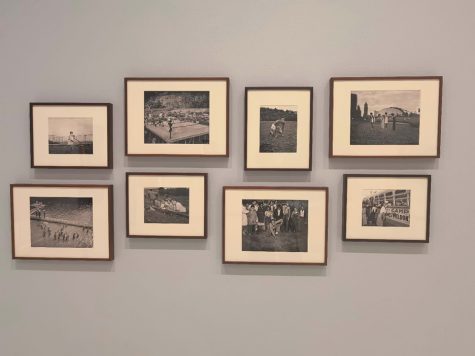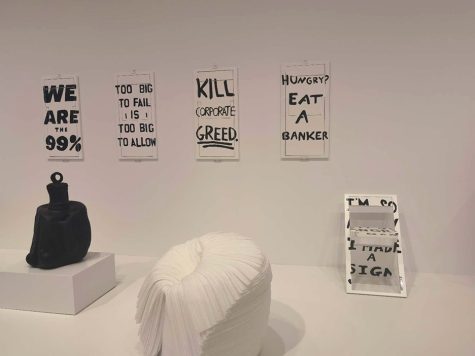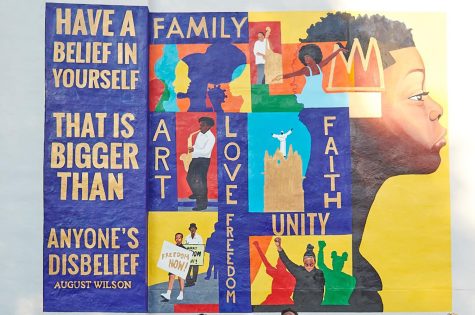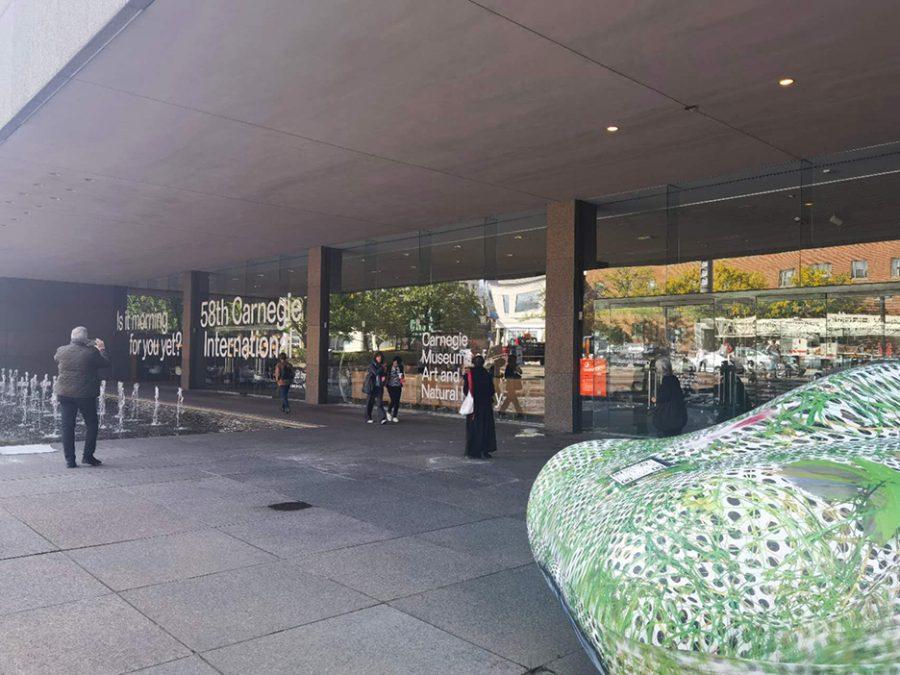‘Is it morning for you yet?’: The 58th Carnegie International presents historical, recent works from global artists
The main entrance to the Carnegie Museum of Art on Forbes Avenue on Friday during the opening of the Carnegie International.
September 25, 2022
When it comes to greetings in the Mayan Kaqchikel culture, people prefer the expression “Is it morning for you yet?” instead of “good morning.” As the title of the 58th Carnegie International, it represents the idea that all humans are related.
James “Yaya” Hough — an artist who addresses topics of authority, confinement, oppression and racial and political violence in his work — elaborated on his own interpretation of the title.
“There’s been an expansion of inclusion globally over the last 30 years. It seems like there’s a global inclusion of many different voices. Many new horizons seem to appear. To me, those horizons all have their mornings. I’m sort of captivated by that thought,” Hough said. “I’ve always had a relationship with the title of this exhibition, even without necessarily understanding the origin of it.”
Carnegie International launched its 58th exhibition Saturday at the Carnegie Museum of Art. The museum established the exhibition in 1896 and hosts new exhibitions once every three to four years. This is the longest-running North American exhibition of international art 一 and it will run until April 2.

(Aoqin Yan | Staff Writer )
The exhibition consists of historical art collections from international institutions as well as recent art creations from contemporary artists.
Sohrab Mohebbi, one of the curators and organizers of the exhibition, said the mission of Carnegie International is to compile the diverse artistic views and creations throughout the world.
“Our hope was to create an exhibition that speaks to common entanglements, desires and shared experiences through divergent aesthetic currents and artistic practices,” Mohebbi said. “The 58th Carnegie International brings together an ensemble of erratic, cunning, unruly, disobedient, undisciplined and intractable attitudes and gestures that overwhelm the ambition of any one organizational intent.”
Some of the art pieces in the exhibit, such as realistic paintings, are straight-forward in meaning, while others are more abstract. Hough said there simply isn’t a right or wrong answer while interpreting art.
“Obviously, in the realm of public art, there could be works of public art that we need to understand historical time periods. But there’s also public art that is murals and sculptures that don’t require them,” Hough said. “It all depends on subjectively… where the artists may fall and what are the goals of the work.”

(Aoqin Yan | Staff Writer )
Hough said his personal approach to art is to let the general public easily understand and enjoy it even without any professional education in the field.
“For me, I tend to fall in a place where the only thing I want the viewer to experience is themselves. They really don’t require much study, training or research in art to experience the piece,” Hough said. “I try to create works that can appeal to the average everyday person who just has the feeling to experience something beautiful.”
Dana Bishop-Root, director of education and public programs at Carnegie Museum of Art, said there will be outdoor art pieces specifically included for exhibition in the 58th Carnegie International.
“The 58th Carnegie International’s public program series is intentionally activating the galleries, outdoor spaces and surrounding community to provide expansive points of entry for all visitors,” Bishop-Root said. “We welcome visitors to spend time with the 58th Carnegie International and experience how the exhibition expands as they bring their own lived experiences, histories, and cultural references to the galleries and programs.”
As an artist who continuously dedicates himself to public art, Hough said he wanted to impact as many people as possible through the medium of freedom.

“As beautiful as the museums and galleries are, the walls that confine them sometimes keep people out. I feel like public art is so democratic and free in the sense that it allows for anyone who’s in a line of sight, to see the work and experience to work,” Hough said. “I feel like where murals are placed and where public art is placed, can impact who sees it, or who sees it frequently, and also could impact that person’s life choices and decisions.”
Hough also mentioned that he hopes to influence the younger generation through his artwork.
“I’m really hopeful that young people will be influenced to take a pathway into the arts, through their experience with public art in their community, as they travel by it and they live with it,” Hough said.
As artwork can appear in a variety of forms and are extremely diverse, Hough also hopes people will engage with art in their daily life.
“I’m always encouraging people to engage with the arts, whether it be through theater or dance,” Hough said. “I feel like there’s freedom, intertwined with engagement with the arts. To me, it’s hard to imagine being fully human without some engagement of a life with art.”








